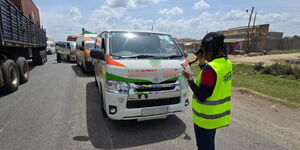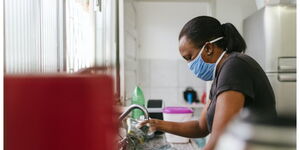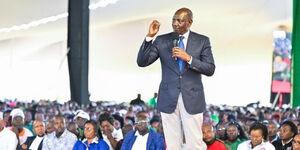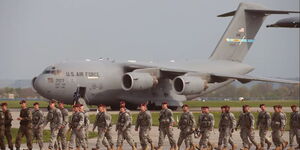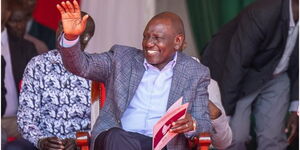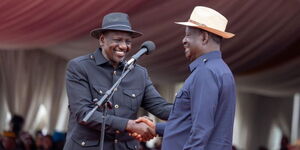The recent fuel prices review by the Energy and Petroleum Regulatory Authority (EPRA) saw the pump prices in the country reach the highest peak in ten years.
The September 14 review pushed the prices of petrol, diesel and kerosene to an all time high of Ksh134.72, Ksh115.60 and Ksh110.82 per litre respectively.
According to data available from EPRA, the body mandated and authorized by law to regulate the fuel prices in the country, more than 50 per cent of this cost goes to the government in form of levies and taxes.
In determining the price of fuel in Kenya, the regulator puts into consideration the product, distribution and storage cost, the supplier margin cost - (oil market companies profit margins), as well as taxes and levies.
The product cost, which is also known as the landing cost, was recorded at Ksh60.3, Ksh53.88 and Ksh54.44 per litre for super petrol, diesel and kerosene respectively for the month under review.
When it comes to the cost of pipeline distribution from Mombasa to Nairobi and storage, the costs are Ksh3.17 (petrol), Ksh 2.90 (diesel) and Ksh2.88 (kerosene).
The profit margins set by the oil market companies per litre are Ksh12.39 for petrol and Ksh12.36 for both diesel and kerosene.
The major factor contributing to the rising cost is the taxes and levies which fall under nine categories that include the excise duty, road maintenance levy, petroleum development levy, petroleum regulatory levy, railway development levy, anti adulteration levy, merchant shipping levy, import declaration fee, and the value added tax.
The taxes total to Ksh58.81, Ksh 46.46 and Ksh41.14 per litre for petrol, diesel and kerosene respectively.
Previously the VAT had been suspended until September 2018 when it was re-introduced leading to the jump in fuel price.
The President had earlier on, in a move to cushion Kenyans from the effects of the Covid-19 pandemic, authorised the utilisation of Ksh1.4 billion under the Petroleum Equalisation Fund.
But why are pump prices lower in the neighbouring countries? This has been a subject of debate among Kenyans for over a prolonged period of time.
For example, in Tanzania, according to The Energy and Water Utilities Regulatory Authority (EWURA), the body charged with fuel regulation, the prices of petrol, diesel and kerosene as compared to Kenya are Ksh19.6, Ksh9 and Ksh7.60 cheaper per litre respectively.
In Tanzania, petrol is retailing at Ksh115.12, diesel at Ksh106.77 and kerosene at Ksh103.22.
However, in Uganda - a landlocked country that imports its fuel through Kenya - the cost of petrol is higher by Ksh1 and diesel by Ksh5, with the products retailing at Ksh135.87 and Ksh120.77 per litre respectively.
Surprisingly, Kerosene is Ksh22.37 cheaper, retailing at Ksh88.45 per litre.
For Ethiopia, the prices are less than half of those in Kenya with the commodities retailing at Ksh51.06 for super petrol and Ksh44.47 for both diesel and kerosene per litre.
This difference has sparked a debate with Kenyans, led by politicians, condemning the high costs of fuel.
Speaker of the National Assembly, Justine Muturi, recently blasted politicians for addressing the fuel price rise in public rallies rather than in Parliament.
Muturi urged Kenyan legislators to introduce a bill in Parliament to advocate for a drop in fuel taxes, saying that he would approve it when the House resumes from recess.


